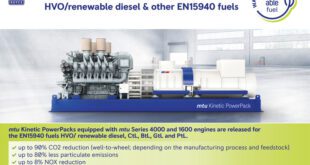While going solar steadily grows in popularity, myths concerning using solar energy for the house persist. Dispelling these myths and learning the facts frees you to embrace a clean, abundant, and efficient energy source.
Currently let’s handle the three myths.
1. Residential solar power systems are too expensive. Let’s address the expense of a home solar power system. The reality may be a home solar energy system might be expensive. Without doing all your homework first, buying and putting in a photovoltaic (PV) system to exchange current home energy consumption stretches the budget of the average American
However, you’ve got complete control of the initial price of a solar energy system. You have no management over the rapidly increasing price of oil and natural gas.
The great news is there are ways to form solar energy obtainable to each budget. Some straightforward steps can bring solar energy in line along with your budget.
Reduce energy consumption,
Improve home energy efficiency,
Use renewable energy tax incentives and rebates that apply in your area.
Thoughtless energy consumption habits are a thing of the past. It’s neither environmentally safe nor economical feasible to continue our caviler attitude of energy consumption. It edges all people to accumulate and follow new energy consumption habits.
Begin with some straightforward habits. Flip your thermostat up in summer and down in winter. Switch to compact fluorescent light-weight bulbs (CFLs). Lower the thermostat on your hot water heater to a hundred and twenty degrees. Take short showers rather than baths. Wash garments in cold water.
Increasing your home’s energy efficiency is an extremely value effective step to going solar. Get a professional home energy audit. An energy professional will tell you where you home loses energy and what efficiency enhancements you’ll be able to make. Relying on your home, enhancements may mean additional insulation, upgrading to energy efficient windows, or sealing air leaks around doors and soffits.
Next, investigate the renewable energy tax incentives and rebates. Congress simply passed into law Incentives Tax Credits (ITC) for residential and business solar systems. The price of a solar energy system might be reduced by as abundant as 30 percent. Every state has its own rebate plans as well.
Remember: the smallest amount expensive steps create the largest impact on the final price of a solar system.
2. Solar energy will not work on cloudy days. What about solar energy systems on cloudy days? As long as there’s some light-weight, solar panels turn out electricity. That means even on cloudy days. Panels do turn out proportionately less energy on cloudy days however they still work.
Obviously, solar panels manufacture a lot of energy from direct sunlight throughout sunny days. It’s true that atmosphere, sun angle, and distance affect the quantity of daylight a solar panel receives.
Weather patterns like clouds, fog, rain, and falling snow diminish the quantity of solar energy that may be captured.
Latitude, time of day, and time of year also affect the amount of sunlight. Logically, the Northeastern US needs a lot of panels to provide the same energy as those self same panels placed in California where there are more direct sunlight days. Geographic location additionally comes into play when incorporating solar power.
However, contemplate this cloudy climate. Germany has [*fr1] the average sun hours because the USA. Two-thirds of all sunlight hours in Germany are cloud covered. It rains there year round. However Germany managed to become the planet’s leader in solar power generation. Last year nearly 0.5 the solar electricity produced in the world was made in Germany.
No matter where you reside, solar power will be part of your energy source. Work with a local solar skilled to work out the simplest solar choices for your home, in your location.
3. Solar energy is inefficient. How efficient is solar energy? Energy efficiency may be a delicate balance between economic costs, benefit for the environment, and on the market supplies. It should be financially reasonable, sensible for our planet and its inhabitants, and in abundant supply.
Seen from a strictly financial purpose of view, coal is the least expensive electrical energy source. On an energy-per-Btu basis, coal is also the least expensive fossil fuel. But adding the environment to the equation, coal could be a major source of air pollution and greenhouse gases. Then take into account that at current rates of production only one hundred fifty five years of coal provides remain.
Potency of photovoltaic (PV) power will increase dramatically with gains in PV technology. Still, commonly out there solar PV panels manufacture electric energy at a 15% efficiency rate. That sounds low, right?
However think about there are not any harmful air pollutants released into the air. Neither can we tend to run out of solar energy. Technological advances as well as incentive tax credits continue to scale back the price of solar energy systems.
Now that three major barriers to a home solar energy system are demystified, you’ll be able to pursue a clean, abundant, and economical energy supply for your home. You recognize it’s attainable to cut back the expense of solar energy, that solar panels do work on cloudy days, and that the foremost economical energy source is one that can never run out.
Learn more about green diy energy. In order to save energy you should know about green diy energy. Click here for more information about green diy energy review.
 Alternative Energy HQ solar power for homes, wind energy, and bio fuel issues
Alternative Energy HQ solar power for homes, wind energy, and bio fuel issues






